“We may have different religions, different languages, different colored skin, but we all belong to one human race” – Kofi Annan
Quite often people separated by geography, culture, and religion finally end up with celebrations that may have different roots & connotations but may outwardly have the same external manifestations. Guy Fawkes Night and Diwali, are one such similar festivals, which are celebrated in countries that are far apart, by people who have very little in common and for reasons that entirely different. However, that being said, both of these festivities have the same expression - as the festival of lights.
Guy Fawkes Day is also known as Guy Fawkes Night or Firework Night/Bonfire Night, is an annual celebration in the United Kingdom, observed on 5th November every year, commemorating a failed assassination attempt on the king’s life, that occurred more than 400 years ago.
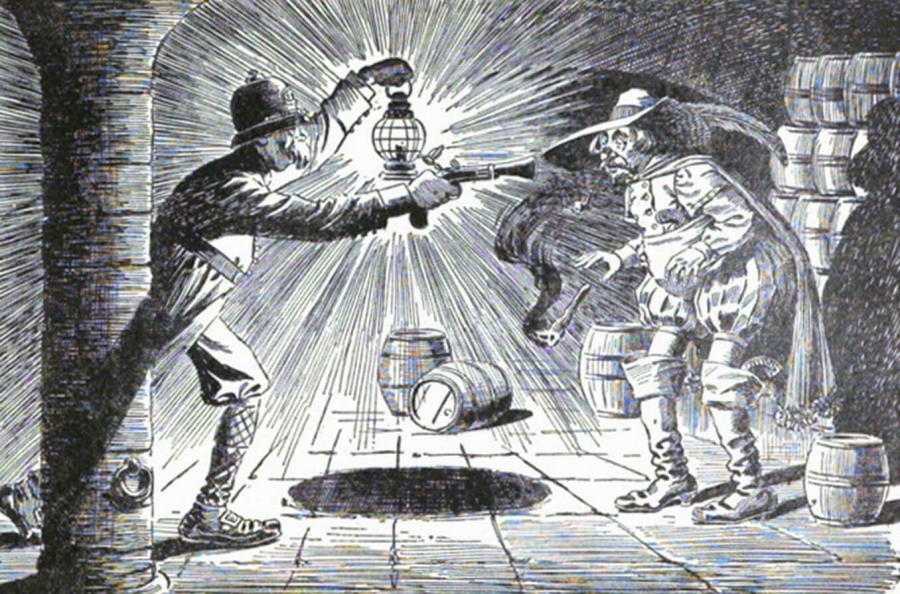
Guy Fawkes Night’s history goes back to the year 1605 when King James I was ruling over England, at a time when a power tussle between Protestant and Catholics had clearly divided the country and the people. The English Catholics were clearly opposed to the Protestant King – James I, and wanted to remove him from the throne so that a Catholic king could be placed in his place. This reason culminated in the Gunpowder plot of 1605, where a failed attempt was made on King James I’s life.
The Gunpowder plot of 1605, was planned by a group of English Catholics led by Robert Catesby. This group of people had planned to blow up the House of Lords (by gun powder explosives) during the opening of Parliament on 5th November 1605, thereby killing King James I and members of Parliament. The traitors had planned to reinstate the king’s 9-year-old daughter – Elizabeth, as the new Catholic head of state. Unfortunately for them, their plot to assassinate the king was leaked to the authorities.
A timely search of the House of Lords, conducted around midnight of 4th November 1605, revealed 36 barrels of gunpowder (in the cellar, where they were stored), which was guarded by Guy Fawkes, a member of the team plotting to assassinate the king. The plot was foiled, and the conspirators tried to escape from London. However, they were pursued. Some of them were killed resisting capture and others like – Guy Fawkes, were executed after a trial.
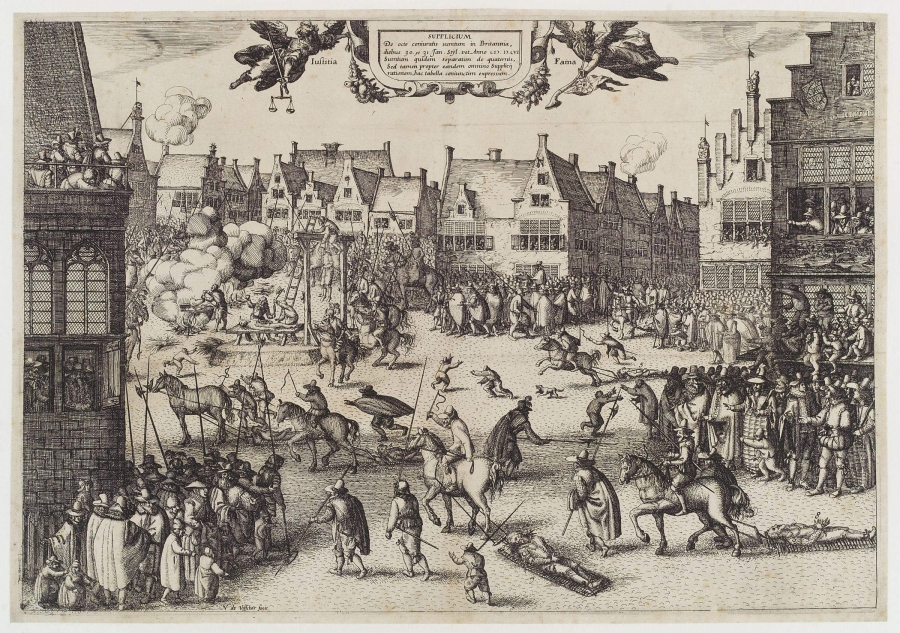
Soon after the failure of the plot to assassinate the king and other members of the Parliament; the Parliament of England passed the – The Observance of 5th November Act 1605, which also became known as the “Thanksgiving Act.” The act made it obligatory for the church ministers to hold a special service of Thanksgiving on 5th November, during which the act was read out loud. Later this political act, got its religious overtones when it started echoing anti-catholic sentiments. Protestants of the time publicized their own vendetta against Roman Catholic Church during the occasion. The common people lit bonfires around London, celebrating the failure of an assassination attempt on their king’s life and burnt effigies of Guy Fawkes and other prominent members of the Catholic church.
Guy Fawkes night’s origin may go back more than four centuries, but Guy Fawkes Night celebrations have undergone a lot of changes since then. Although celebrated to this day, mainly in the United Kingdom, and some erstwhile colonies of the British Empire, the reason for the festivities have changed a lot through the ages. Keeping in with the tune of the changing values of the modern world, the festivities of today, have very less to do with the religious conflict of Protestant vs Catholics and is more of an enjoyable social commemoration.
The modern world celebrations have more to do with merrymaking bonfires, fireworks, food festivals, and parades. Effigies of Guy Fawkes are thrown into a bonfire (or placed on the top of a bonfire), more with a frivolous attitude than with any political vendetta. Sometimes straw effigies of local unpopular politicians also find their place in the bonfire, along with Guy Fawkes’s dummy. Instead of threats from ancient traitors plotting with gunpowder to blow up the government, the only threat people may face in streets is from cute young children, carrying effigies of Guy Fawkes (also called Guy), asking passers-by for money, which they use to buy firework for the festivities.
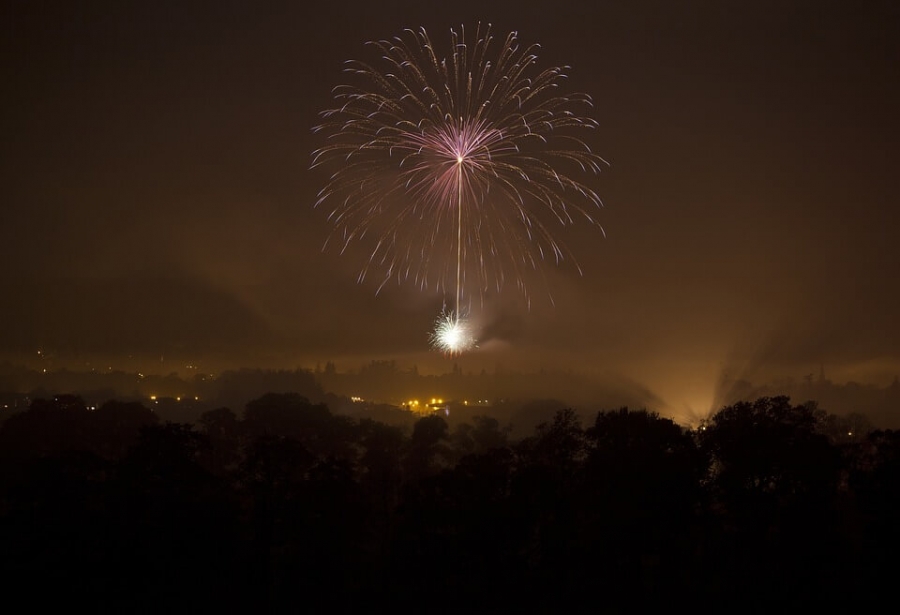
Finally coming to the main topic of our discussion, it is the fireworks which are the most important component of Guy Fawkes Night celebrations in the modern world. The fireworks symbolize the explosives that the plotters of the Gunpowder plot of 1605 never got to use. Guards also perform a ceremonial search of the Parliament, looking for the potential arsonist. Lewes in the South East of England is one of the more famous places, where thousands of people gather every year for the festivities. It seems that Guy Fawkes, is very much alive in the imagination of people, long after he is gone.
In contrast to Guy Fawkes night, which had its root in a historical political plot, the Indian festival of Diwali has its roots in ancient religious traditions. Origin of Diwali Festival lies in the Hindu religious epic – Ramayana. The Indian festival of lights – Diwali, commemorates the homecoming of the ancient Hindu crown prince – Lord Rama.
Lord Rama is considered as the human incarnation of God almighty himself, who was born on earth to inspire humans to achieve higher moral values. As the story goes, he was exiled along with his wife and younger brother from his kingdom for 14 years. During this difficult period, a demon king had kidnapped his wife, creating more problems for him. After a lot of trials and tribulations, Lord Rama finally managed to kill the demon king and his army, and returned to his kingdom after 14 years, along with his wife and younger brother. The people who loved their crown prince dearly, celebrated the homecoming, by lighting oil lamps throughout the kingdom, thereby turning even the dark night to bright as day. Thus, started the greatest of Hindu festivals, - The celebration of Diwali.
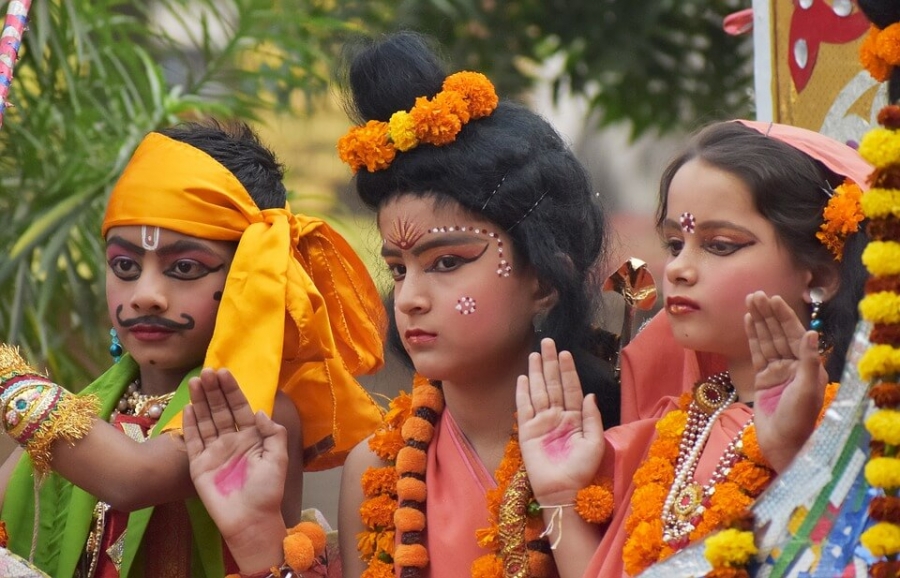
Hindu scholars who strongly believe in human birth of Lord Rama, have calculated the date of return of Lord Rama to his kingdom – Ajodhya, to be as – 2nd January 5075 BC, based on the planetary configuration. Now some people may be skeptical, about the date of origin of Diwali festival, but it is beyond doubt that the history of Diwali festival goes back thousands of years.
Ancient Sanskrit texts like Skanda Purana and Padma Purana, which were written during the second half of first millennium AD, described the festival. Nilmata Purana, written in modern-day Kashmir between 500 AD to 800 AD, describes Diwali celebrations with goddess Laxmi at the center. One of the famous kings of ancient India – King Harsha, who lived during 7th century AD, writes about Diwali in his Sanskrit play – Nagananda. A similar reference is also are seen in work of the Sanskrit poet – Rajashekhara, in his 9th-century creation – Kavyamimamsa.
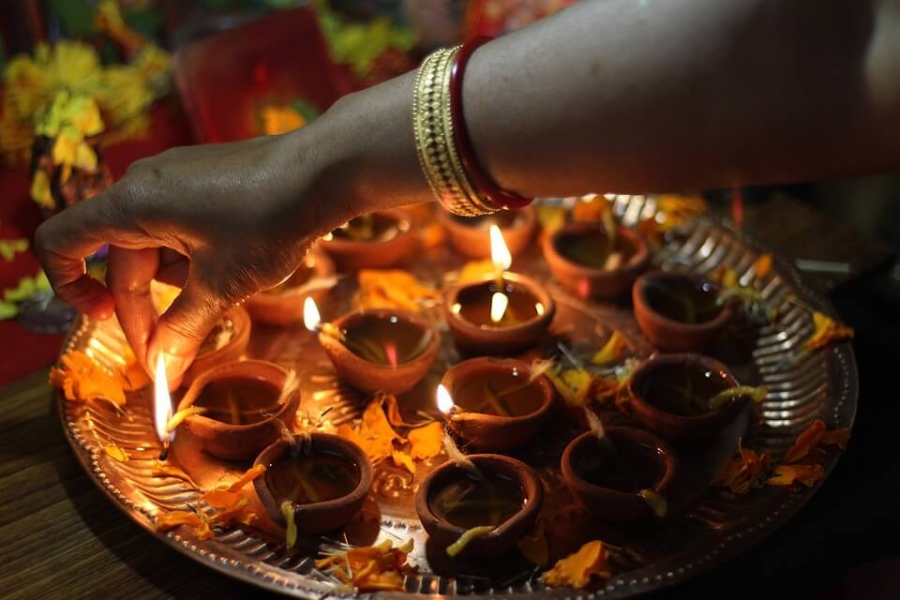
Foreign travelers of the ancient era - passing through India, also wrote about their first-hand experience, when they observed the festival being celebrated. Some of these were – 11th-century Persian traveler & historian – Al Biruni, 15th-century Venetian merchant Niccolo de Conti and 16th-century Portuguese traveler Domingo Paes. The descriptions described the time of the year when these festivities were held; and the way people adorned their temples and houses with innumerable oil lamps while indulging in singing, dancing, and other religious festivities.
Even in modern India, Diwali remains one of the major festivals of Hindus, which is observed as a national holiday. In some other countries like – Fiji, Mauritius, Guyana, Malaysia, Myanmar, Sri Lanka, Singapore, Nepal, Surinam, Trinidad, and Tobago; it is celebrated with much pomp and splendor. The festival generally takes place between mid-October and mid-November, although the exact day of the festival, may vary from year to year, as it is decided by the position of the moon. According to the Hindu calendar, the darkest night or ‘no moon day’ in the month of Kartik is considered as the right time for Diwali.
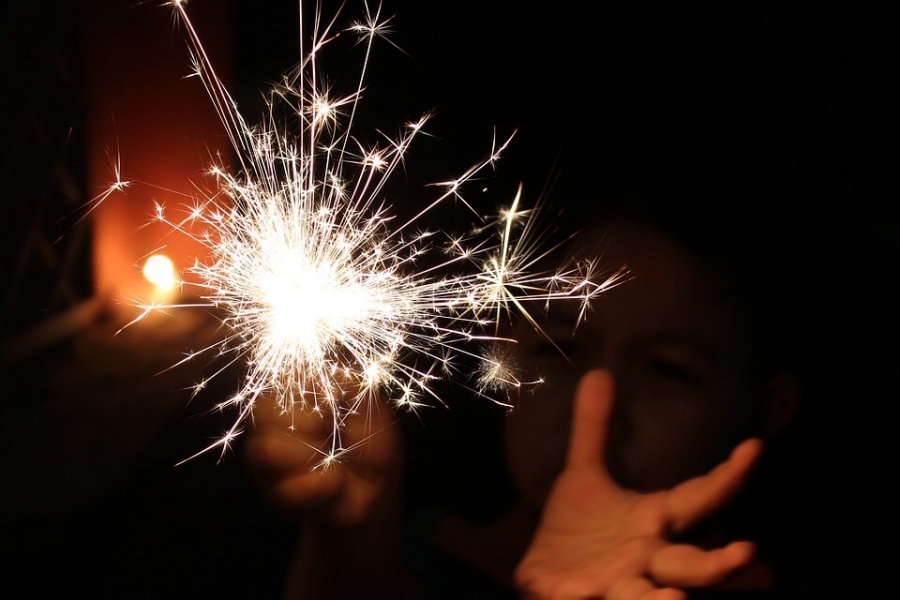
In contrast to popular misconception, the festival is celebrated for 5 continuous days, with the 3rd day being celebrated as the main festival of lights and is also known as the day of Laxmi puja when goddess Laxmi – the Hindu goddess of wealth and prosperity is also worshipped. The 1st day is celebrated as Dhan Theras (birth of god – Dhanvantari, the physicians of gods), the 2nd day as Naraka Chaturdashi (the day Lord Krishna killed the notorious demon – Narakasura), the 4th day is celebrated as Govardhan Puja (the day Lord Krishna defeated the arrogant king of gods – Indra & encouraged people to worship nature), the 5th day is celebrated as Bhai Dooj (The day sisters pray for a long and happy life of their brothers).
In the days leading to Diwali, people renovate, clean and decorate their workplaces and home. On the day of the actual celebrations; people get attired in their best dresses & greet each other with warmth and friendliness and share gifts & sweets. Temples and homes are adorned with traditional earthen oil lamps with people keeping them lit, for entire evening and night (although in many cities, electrical lighting decorations have replaced them). The light from these lamps represents happiness and prosperity, which the people believe, that the festival will bring them. While the older people partake in family festivals and worship of gods and goddesses, the youth and children enjoy bursting crackers and other fireworks.
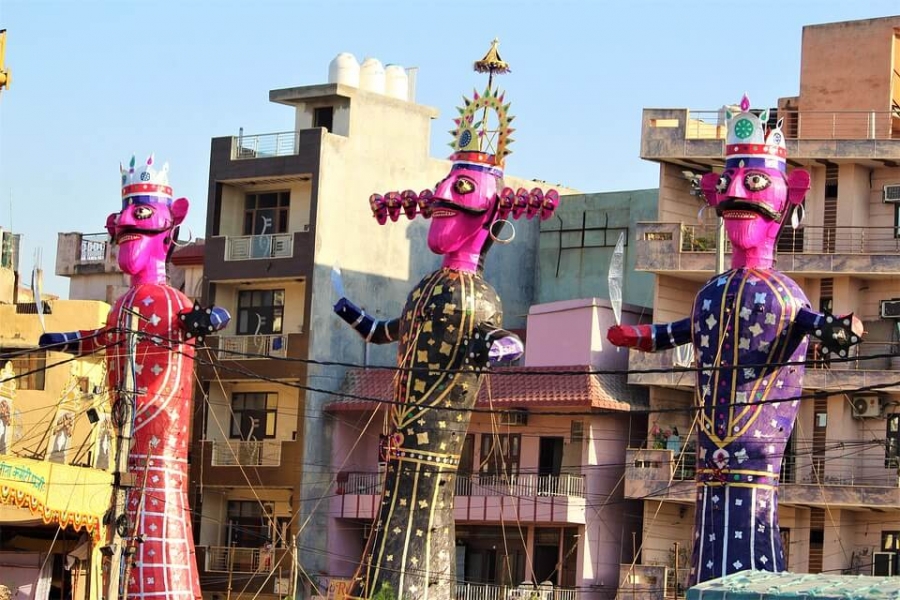
Although some people may believe that the burning of an effigy of Guy Fawkes, which is an integral part of Guy Fawkes night is absent in Diwali, but that it is not entirely true. In place of effigy of Guy Fawkes, a giant statue of the demon king – Ravana, who was killed by Lord Rama, is built across India and burnt with much fanfare in another major Hindu festival – Dussehra, which precedes Diwali by approximately 18 days. The burning of the statue of Ravana (symbolizing his death) is accompanied by many fireworks. However, in contrast to Diwali, the lighting decorations of the houses and temples in this occasion is much less.
The last time Guy Fawkes Night and Diwali were celebrated on the same day was on 5th November 2010. It created quite an interesting situation in places like the United Kingdom, which has a large population of the Indian diaspora. The 2 major celebrations of 2 very different people, coinciding at the same time in the same place, highlighted some unique human features.
The human race in spite of much diversity and difference of culture, language, religion & economic status have a tendency to express their emotions in a way, that transcends all geographical and socioeconomic boundaries. Finally, east may be east and west may be west, but sometimes the twain does indeed meet. Maybe it is this unity in diversity of different cultures across the world, that will pave the way for a better world.